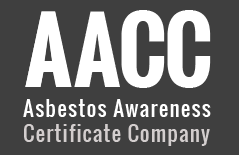
Which Premises Will The Duty Apply To?
The duty to manage asbestos applies to all non-domestic premises, regardless of the type of business or activity conducted within them. This includes all commercial, public, and private buildings, ensuring that no workplace is exempt from asbestos management responsibilities. Additionally, the duty extends to the common areas of residential rented properties, such as halls, stairwells, lift shafts, and roof spaces. Essentially, if a building could pose a risk from asbestos-containing materials (ACMs), the duty applies.
The Regulations Require Duty Holders to:
- Investigate whether asbestos or asbestos-containing materials (ACMs) are present in the premises.
- Assess the condition of any ACMs that are discovered.
- Conduct a thorough risk assessment to understand the potential dangers posed by the ACMs.
- Prepare a written plan outlining the measures to be taken to manage the risk, ensuring the safety of anyone in the building.
- Inform anyone who might disturb the ACMs or work in the vicinity of these materials about their presence.
It is important to note that the regulations do not specifically mandate that a formal asbestos survey be carried out. However, a survey may be necessary to identify certain ACMs or to confirm the full extent of their presence within a building. While not always compulsory, having a survey conducted can be a critical step in properly managing the risks associated with asbestos.
The regulations also do not require that all ACMs be removed from a building. In many cases, removing the asbestos may not be necessary, and alternative methods, such as encapsulation, can be employed to control the risk. Encapsulation involves sealing or enclosing the asbestos to prevent fibres from becoming airborne, which can be an effective method of managing asbestos that is in good condition or unlikely to be disturbed.
When Should Asbestos Be Removed?
ACMs that are damaged or at risk of becoming damaged may need to be removed. If the asbestos is in extremely poor condition or is prone to frequent damage, replacement might be the best course of action. However, asbestos that is in good condition, or that can be safely sealed or protected, should be managed and not automatically removed. In these cases, clearly marking the location of ACMs with asbestos warning signs is crucial for safety.
Additionally, it is essential to keep a record of the location of all ACMs within the building, marking them on the building's plans. This documentation is vital for future reference, particularly for any contractors or workers who may need to conduct maintenance or repairs. Regular inspections of ACMs should also be carried out to monitor their condition over time. Properly maintained asbestos can remain safely in place for years, provided its condition does not deteriorate.
It may also be beneficial to keep records of any materials that have been tested and confirmed not to contain asbestos. These records can be useful in cases where there may be questions or concerns about the materials during future work or inspections. Providing evidence of non-asbestos materials can help avoid unnecessary delays or complications during renovation or construction projects.
Who Can Handle ACMs?
Some types of work involving ACMs must be carried out only by licensed asbestos contractors. Certain tasks may also need to be notified to the Health and Safety Executive (HSE) or the local Environmental Health Authority. These regulations ensure that high-risk work involving asbestos is carried out safely, by trained professionals, and with the proper precautions in place to protect both workers and the public.
The duty to manage asbestos is not just about immediate removal. It’s about a balanced approach to risk management, ensuring that ACMs are handled appropriately and that risks are controlled without unnecessary disruption. Whether through removal, encapsulation, or regular monitoring, the key to asbestos safety is having a well-documented and maintained plan in place.
The duty to manage asbestos applies to a wide range of premises, from commercial properties to the common areas of residential buildings. The responsibility lies with duty holders to identify and assess the presence of asbestos, implement safety measures, and ensure that anyone working near or potentially disturbing ACMs is informed of the risks. Whether it involves removing damaged ACMs or simply monitoring those in good condition, managing asbestos is a vital aspect of maintaining a safe and compliant property.
If you're unsure whether asbestos management applies to your premises or if you need assistance with risk assessments and asbestos management plans, contact a licensed asbestos professional for expert guidance.



